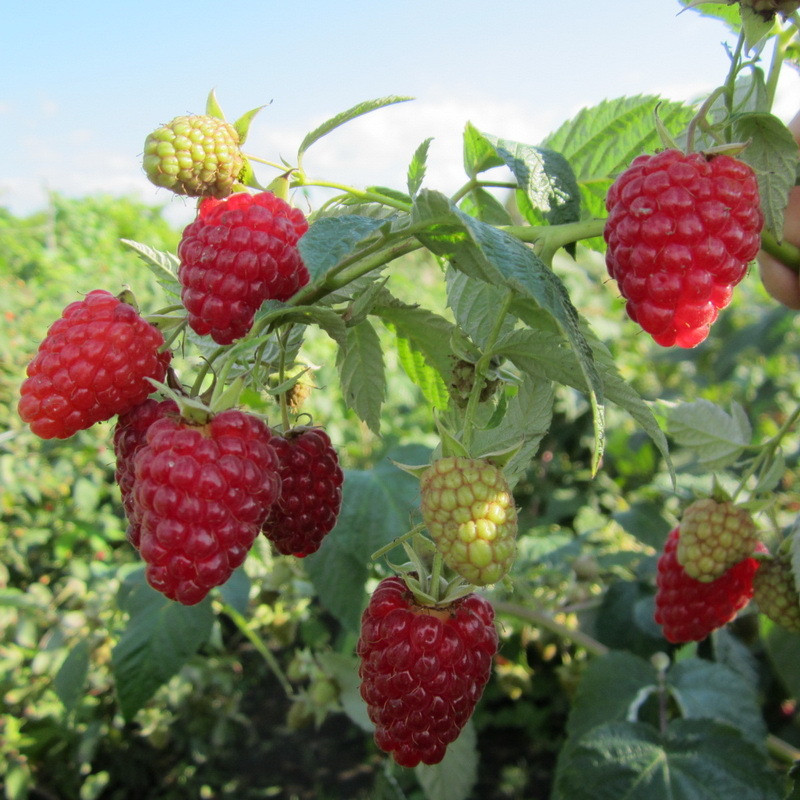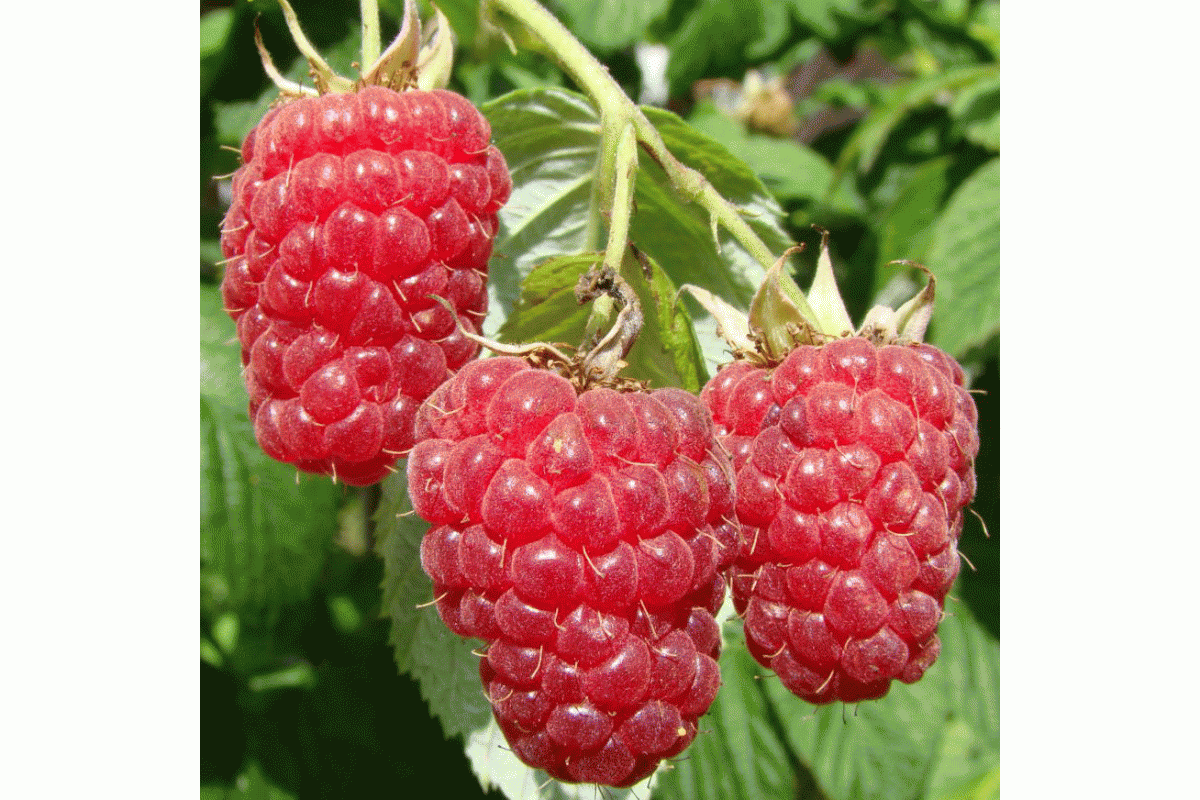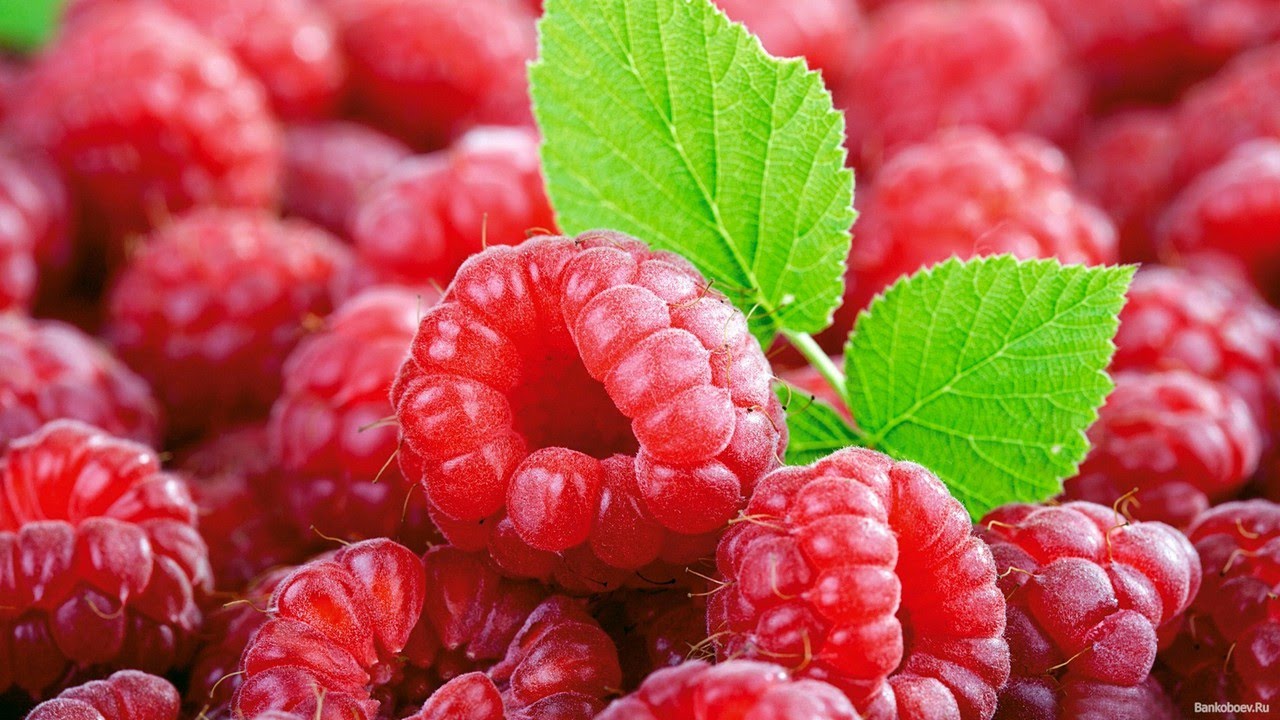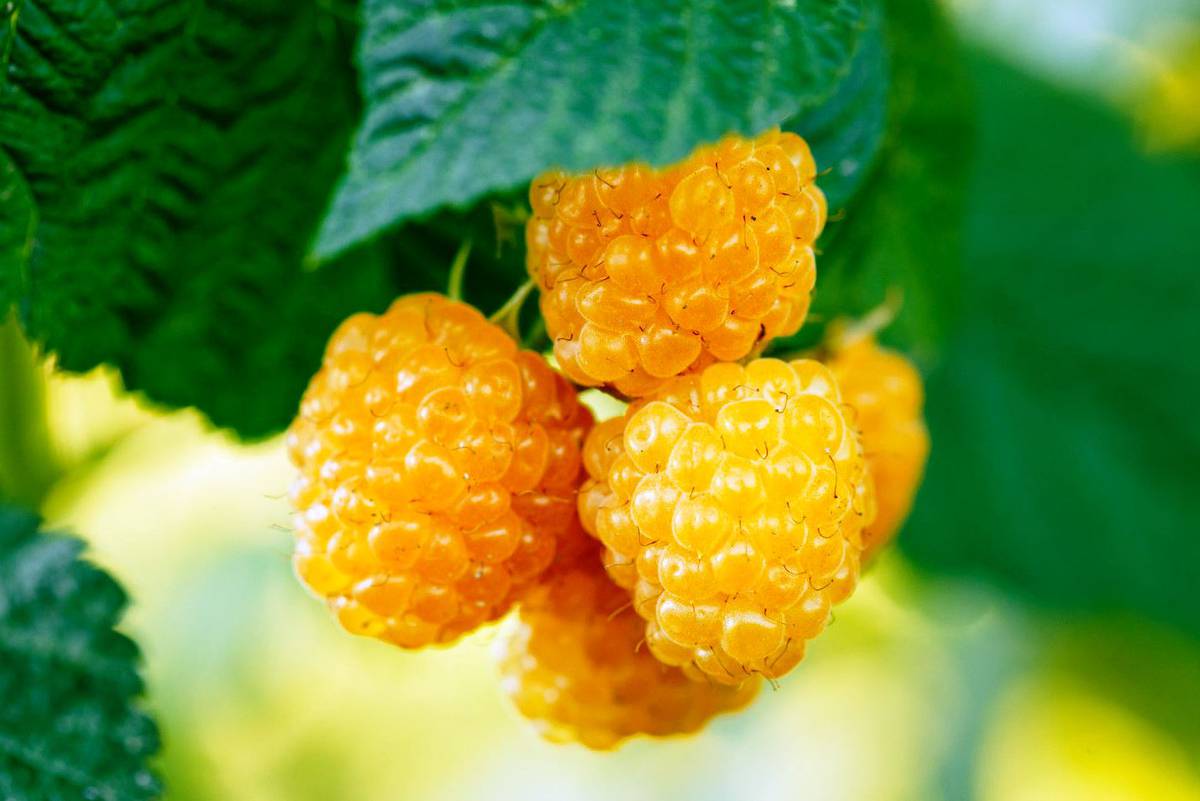Content:
Every gardener dreams of an unpretentious berry culture that gives good yields. Raspberry Peresvet, which has taken the best qualities from its “parents” (Solj and Stolichnaya), fully corresponds to this wish.
Features and characteristics of the variety
This type of raspberry culture belongs to the mid-late varieties - summer residents begin to feast on sweet berries from the second half of July. The description of the variety will help you to appreciate the best qualities of Peresvet raspberries.
Features of the plant:
- an upright bush that grows up to 2 meters has a compact habit; this allows you to create an extensive plantation even in a small summer cottage;
- there are few shoots on raspberries, which eliminates the need for private thinning pruning;
- annual branches are colored reddish-brown and devoid of wax bloom;
- The thorniness in the culture of this variety is average, but as the shoot ripens, the thorns harden;
- each stem contains 12 fruiting branches;
- in large, wrinkled, dark green leaves, framed by teeth, the lower plate is much lighter;
- medium-sized flowers have a pleasant aroma that passes on to the fruit;
- in elongated large blunt-conical berries, the average varietal weight reaches 3 g, but if you pay attention to feeding, you can increase the weight up to 5.5 g;
- with good care from 1 sq.m. you can get up to 3 kg of large fruits; with more intensive agricultural technology, the yield rises to 5 kg per one square meter of the plantation;

During the fruiting season
- when the harvest time approaches, the berries acquire a matte dark raspberry (almost cherry) color;
- raspberry has a multifaceted taste - richly sweet, with a light, pleasant sourness;
- the aroma, although not pronounced in the fruit, is quite appetizing.
Each described characteristic is already a reason to pay attention to this variety of raspberries, but Peresvet has other positive qualities.
Advantages:
- the plant has elastic, dense fruits, which allows them to be transported over long distances, making the berry suitable for market implementation;
- the culture has increased resistance to all negative factors: diseases, pests, drought, cold weather;
- Peresvet does without abundant watering, and the fruits are not baked in the bright sun;
- plants are not demanding on fertilizers, but feeding should not be completely excluded if there is a desire to achieve a higher yield.
Despite the fact that the ripening of the fruits occurs in the middle of summer, summer residents can feast on raspberries until autumn. Although the agrarians consider this feature of Peresvet a disadvantage.
Variety care
This varietal raspberry easily tolerates the flaws of agricultural technology and is capable of bearing fruit in any conditions. But the yield and size of berries will still depend on the gardener's attentive attitude to the culture.
Selection of seedlings
The first stage of cultivating a variety depends on the correct choice of planting material. Here you need to consider the following points:
- when acquiring seedlings with an open root system, they choose shortened stems on which there is no foliage;
- when buying sprouts with closed rhizomes, they take those that have healthy leaves on an unshorn stem;
- the thickness of the shoot at the base should be at least 1 cm, and the length of the roots - from 15 cm.
Important! The seedlings should be inspected to ensure they are free from damage, disease and pests.
Site preparation
Peresvet loves an abundance of sun, so you should choose open areas with a straight relief. It is better to ignore the slopes - snow and moisture will not linger under the bushes, which will cause the root system to dry out.
Additional Information. Gardeners often use Peresvet raspberry bushes as a hedge. In this case, it is advisable to retreat 1.5 m from the border so that the bushes, growing up, do not capture the neighboring area.
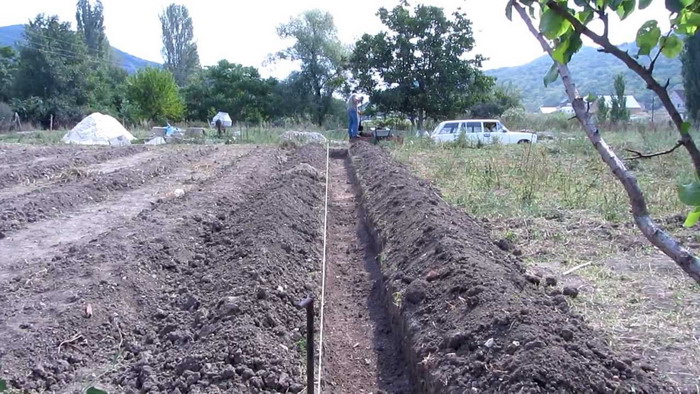
Trench preparation
Prepare a place for planting, as for other varieties of raspberries. In autumn, organic matter and mineral complexes are introduced with simultaneous digging of the earth. Immediately prepare the holes for seedlings and leave them until spring. If the planting is planned in the fall, then potassium sulfate (50 g) and superphosphate (65 g) are immediately introduced into the pits, mixed with manure (25 kg) per 1 sq.m.
Landing
Raspberries are planted in pits or trenches, making the distance between rows of about 2-2.5 m, and between bushes - 1.5-1.7 m each.When industrial cultivation, farmers form plantings more dense - 1 m between plants and 2 m for row spacings. But this does not prevent them from achieving high yields.
When planting seedlings in spring, a week before the procedure, half a kilogram of wood ash, 35 g of a mineral complex and a bucket of humus are placed on the bottom of a pit or trench. After sprinkling fertilizers with a small layer of earth, seedlings are lowered into the hole or trench, carefully spreading the roots with them.
The pit is covered with soil, compacted well and watered immediately. Mandatory mulching with sawdust (not fresh) and humus. After 2 days, 1-2 more buckets of water must be poured under each bush.
Watering
This variety will not be "offended" if the irrigation regime is violated, but this should not be abused. It is important to consider the air temperature in order to preserve the harvest. Plants are watered early in the morning or before sunset, if it is a sultry season.
Note! Autumn watering is required before the bush is pruned, which is being prepared for wintering.
Nutrition
If there is a desire to get a higher yield, then, in addition to the fertilizers applied during planting (they are enough for 3 years), mineral fertilizing is used every season: in the spring, during the flowering period and at the time of the ovaries. Also, at the beginning of the growing season, it is recommended to scatter urea over the beds. The extra potassium will make the berries thicker and more transportable.
Trimming
The first shortening of the bush (up to 25 cm) is done immediately after planting, if the seedling was purchased with foliage. This promotes good rooting. In the future, the main amount of trimmings is reduced to 2: in spring and autumn. The first is sanitary, the second is necessary to prepare the bush for wintering.
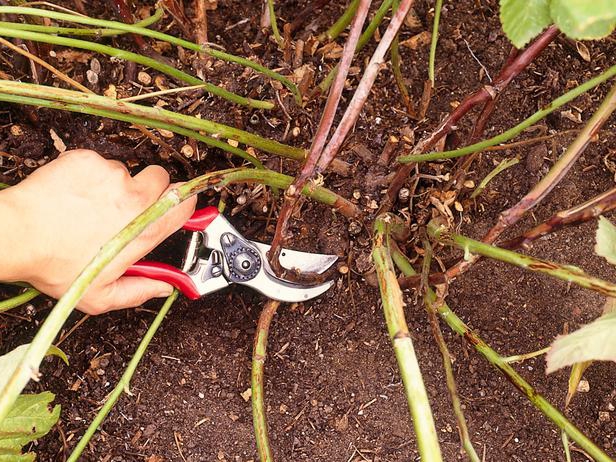
Spring pruning
Note. To form a plant, plucking is used in the first half of May for the northern regions and in early July for the southern regions. This will allow the shoots to branch more actively, but will move the ripening period by 2 weeks.
Care advice
- The raspberry variety Peresvet can be stimulated to a bountiful harvest if, during the period of berry formation, a layer of cow manure is placed under each bush;
- Periodic mulching of the soil around the plants will help to retain moisture for a long time, and also make the soil looser;
- To make the raspberry bushes easier to endure the winter, it is recommended to add a little complex organic matter before autumn watering;
- In the southern regions, the varietal remontant can not be cut off and the shoots cannot be wrapped for the winter - it is enough to bend them to the ground and cover them with spruce branches;
- So that the overwintered shoots do not overreach, in the spring they must be opened and straightened in time.
Due to the compactness of the bush, many gardeners grow Peresvet without tying up. But a large crop will tend to the branches to the ground, making it difficult for the berries to get enough ultraviolet light. Therefore, caring for raspberries should include the arrangement of a standard 2-meter trellis with a couple of rows of wire. This will facilitate shrub rationing and harvesting.

The method of tying on a trellis
